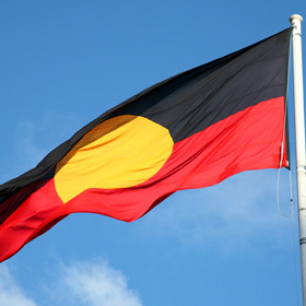A community-initiated binge drinking awareness campaign in Indigenous communities is working, according to new results released this week by researchers at the National Drug and Alcohol Research Centre (NDARC) at the University of NSW, James Cook University’s Cairns Institute and the University of Newcastle.
The ‘Beat da Binge’ initiative, developed by Gindaja Treatment and Healing Indigenous Corporation in partnership with other local community organisations, focuses on binge drinking as a key concern in the North Queensland Indigenous community of Yarrabah.
The two-year $250,000 project, funded through the Federal Government’s National Binge Drinking Strategy, targets greater involvement of young Indigenous people in gaining evidence about binge drinking behaviours, and analysing and influencing the possible causes of binge drinking.
The results indicate that since the start of ‘Beat da Binge’ in 2011, there are now:
- 16 per cent fewer young binge drinkers in Yarrabah
- a 27 per cent increase in awareness of binge drinking
- a 16 per cent increase in awareness of what a standard drink is
The biggest reductions in drinking were for the consumption of spirits, which is most promising because the high alcohol content of spirits makes them especially dangerous for young people.
A/Professor Anthony Shakeshaft, deputy director of NDARC, said the findings showed projects led and designed by communities can be highly effective.
“For too long governments and researchers have presented Indigenous communities with policies and ideas we think they could implement, but this project has rightly turned that approach on its head,” he said.
“It shows Indigenous communities can design and fund their own programs, then partner with researchers to evaluate them. I think this is the blue-print for a better form of integrated community and research partnerships.
“This community initiative has demonstrated the binge drinking behaviour of young Indigenous Australians is not much different to all young Australians, even though their reasons for binge drinking probably are, in that they point to a lack of employment and training opportunities. It also shows binge drinking among young Indigenous Australians can be reduced.”
Professor Komla Tsey, who led The Cairns Institute research team, said researchers had been looking to explore why young people drink at harmful levels and what can be done to change this behaviour.
“Our survey showed that young people in Yarrabah drink because they are ‘bored’ – but bored did not mean there was not enough entertainment.
“Young people described ‘bored’ as meaning that there was a lack of purpose and meaning in life, training, employment or activities.
“As a result, and more importantly, these same young adults also articulated their solutions to being bored, which I think is a really positive step forward.
“For example, they highlighted they wanted further mentoring in education, training and employment.”
Gindaja Treatment and Healing Indigenous Corporation Chief Executive Officer Ailsa Lively said it was important that young people in Yarrabah had been involved in much of the project’s design and decision-making, and in running related community events.
“I’m sure that this community-driven approach is a major reason why we have been able to see such positive results from this project,” Ms Lively said.
The Beat da Binge Project Partnership meeting held in Yarrabah this week included discussions about continuing the partnership to help define future directions for young people in Yarrabah on a more sustainable basis.
The final report on the initiative is expected to be released in June this year.
For more information about the ‘Beat da Binge’ project, contact:
- A/Professor Anthony Shakeshaft via NDARC media officer Erin O’Loughlin (02) 9385 0124 / 0402 870 996 or erin.oloughlin@unsw.edu.au
- Professor Komla Tsey: komla.tsey@jcu.edu.au / 0428 282 806
- Ms Ailsa Lively: ailsa@gindaja.org / (07) 4056 9156



